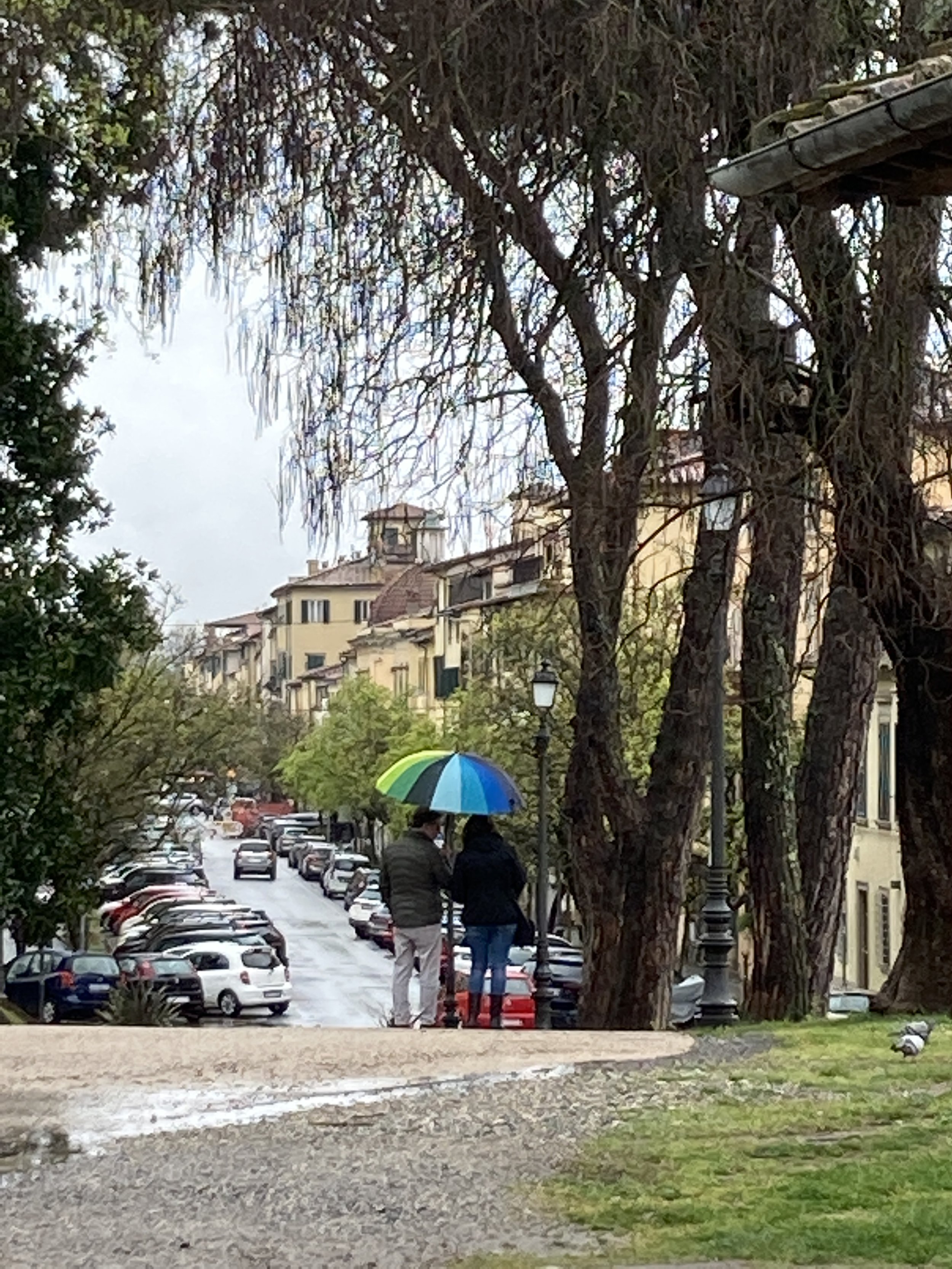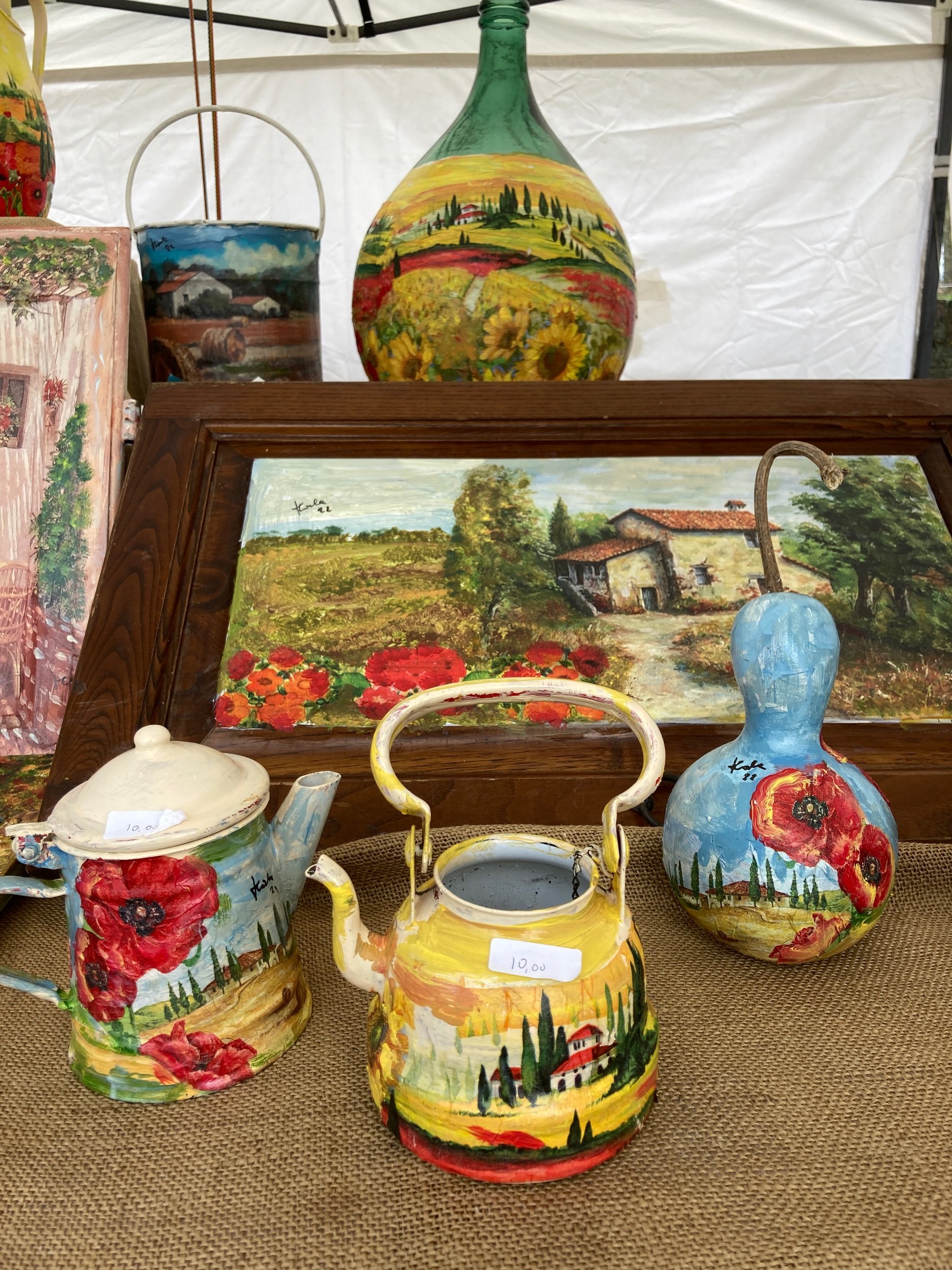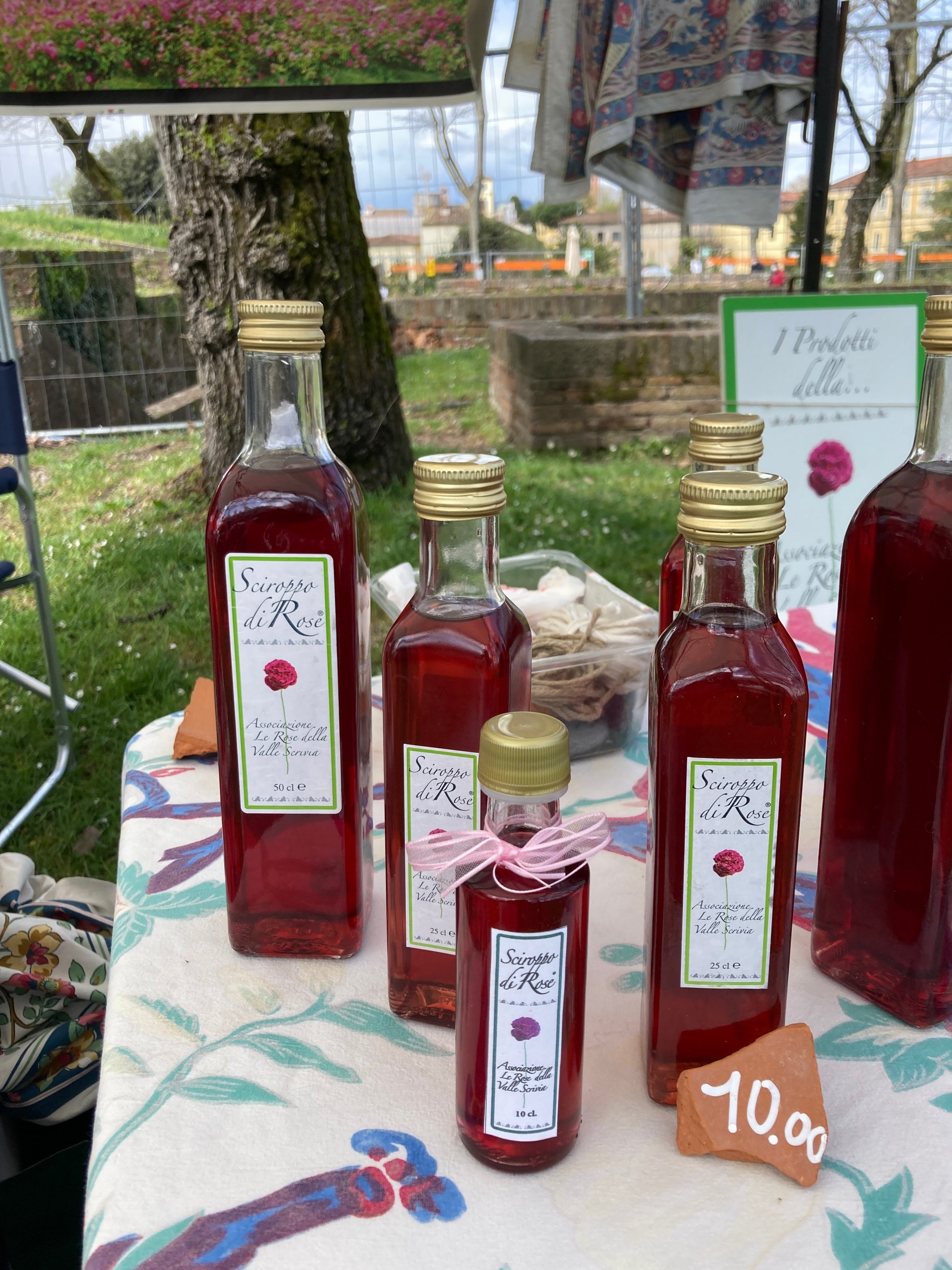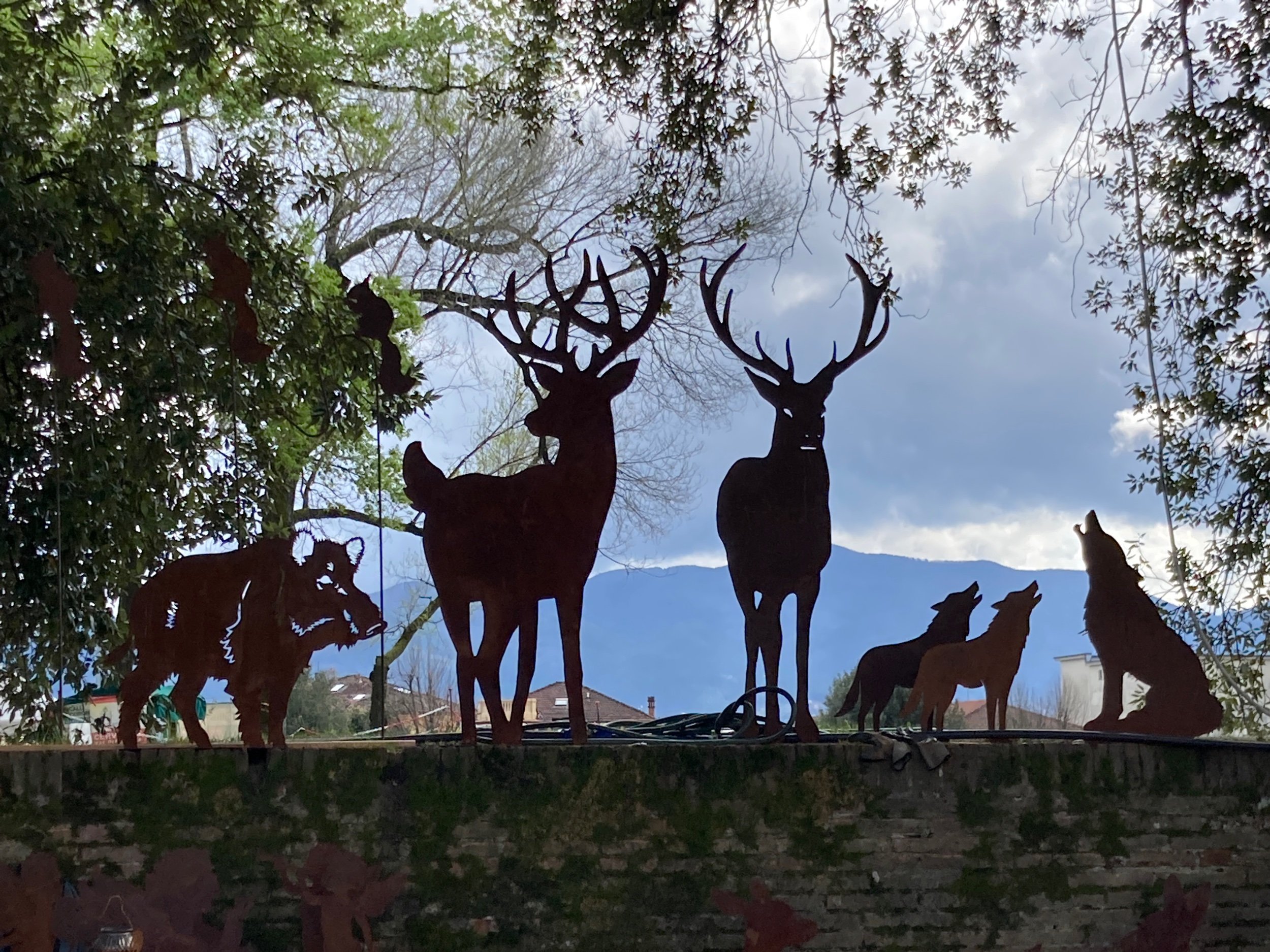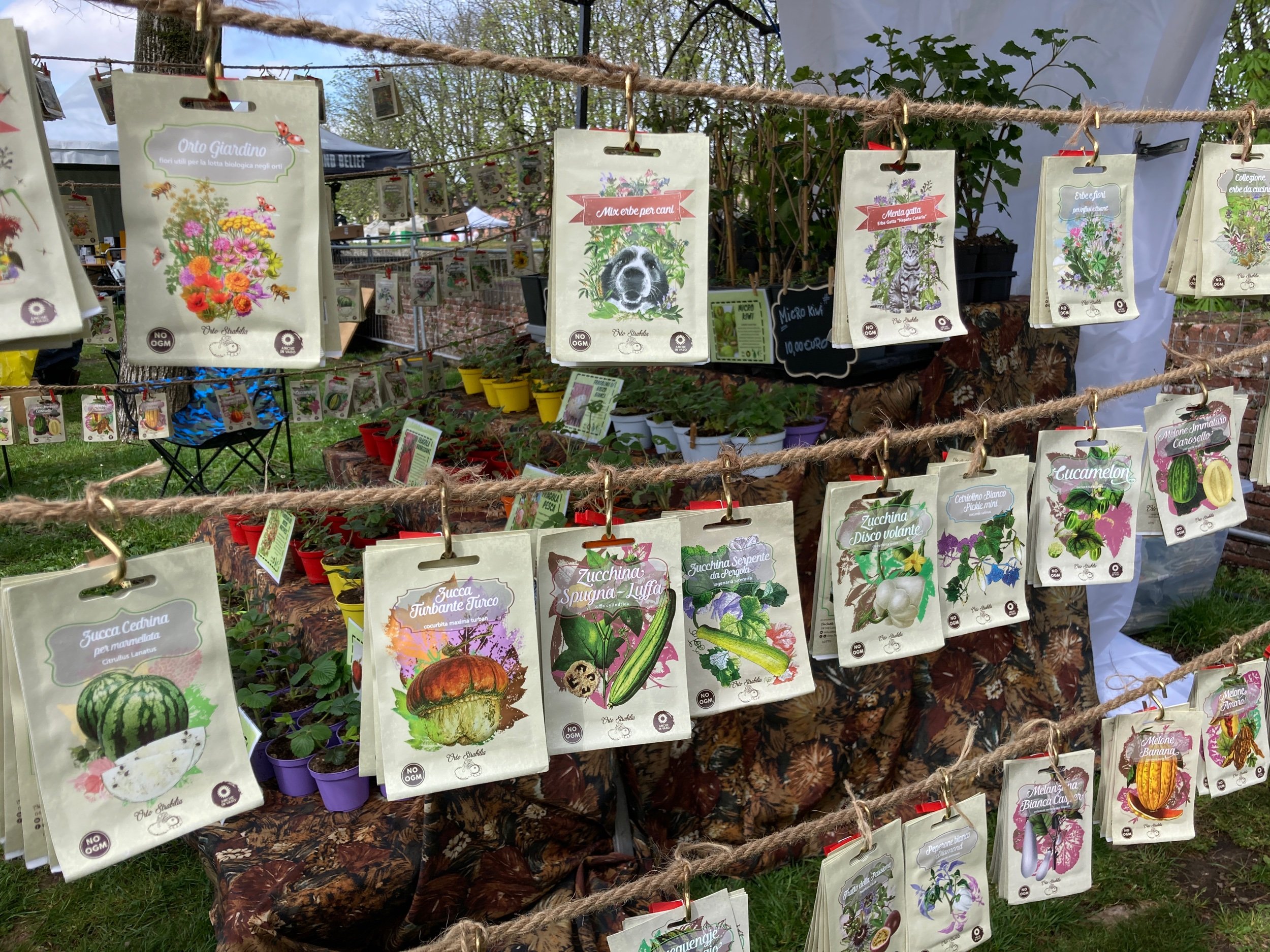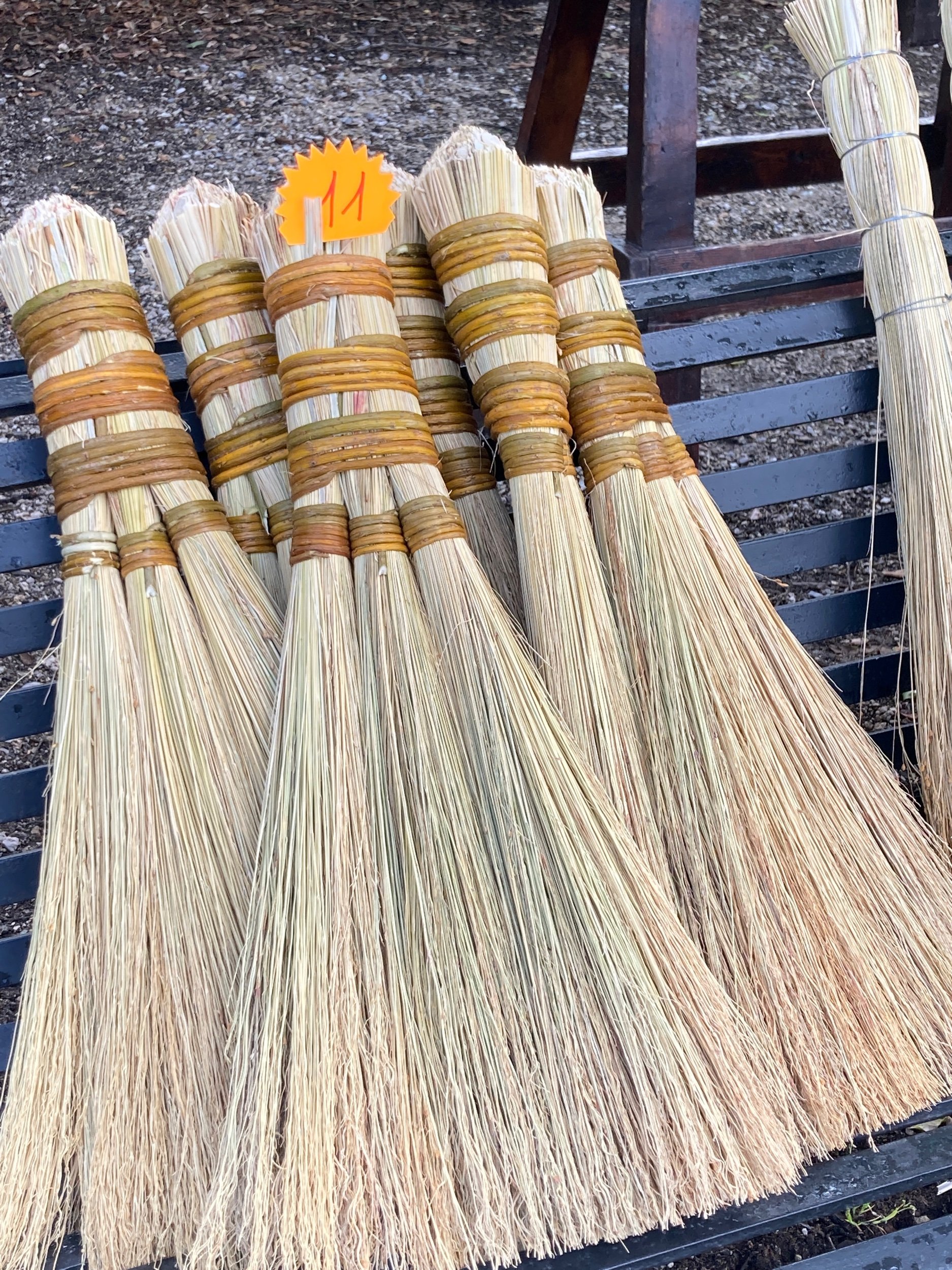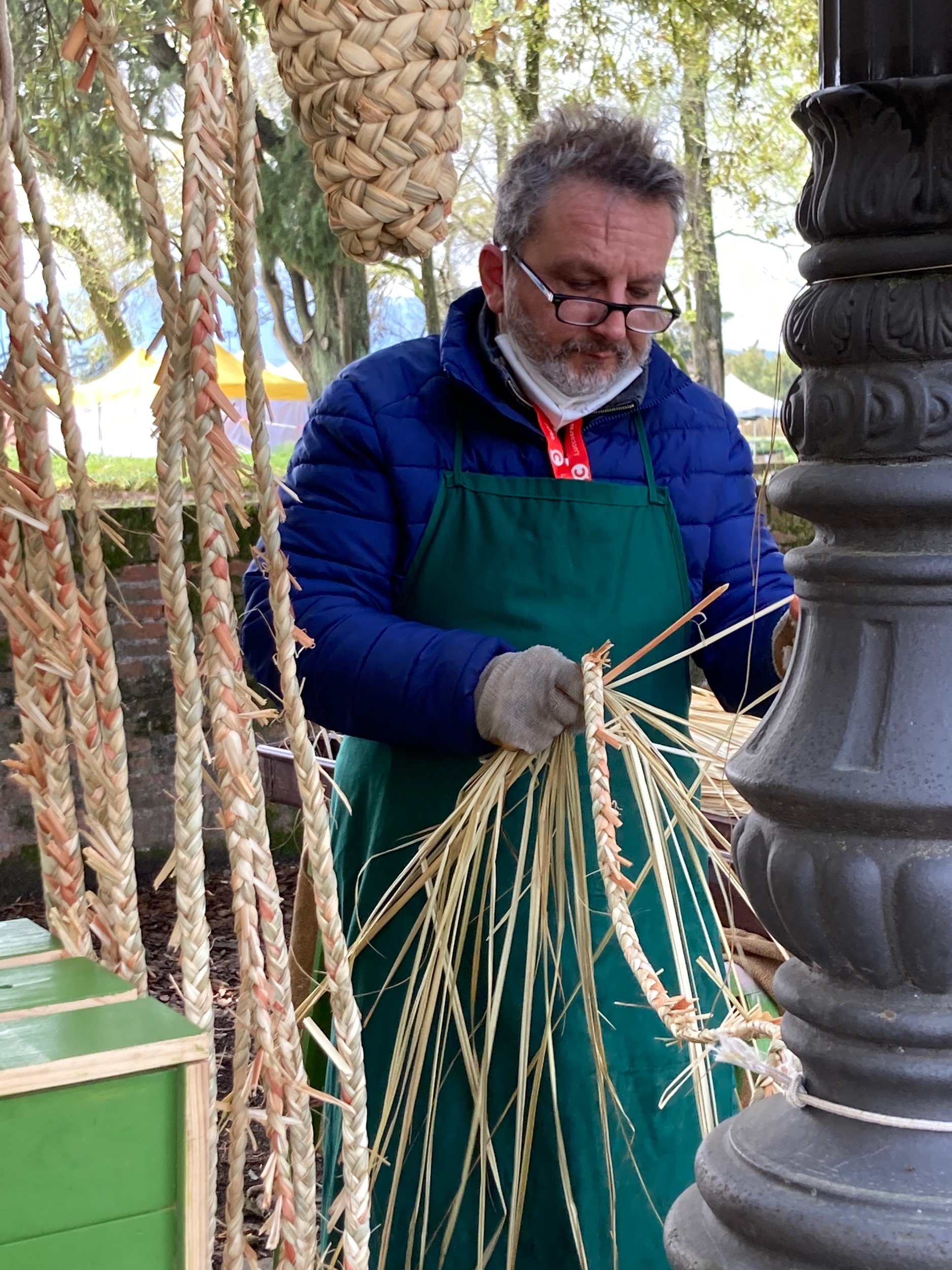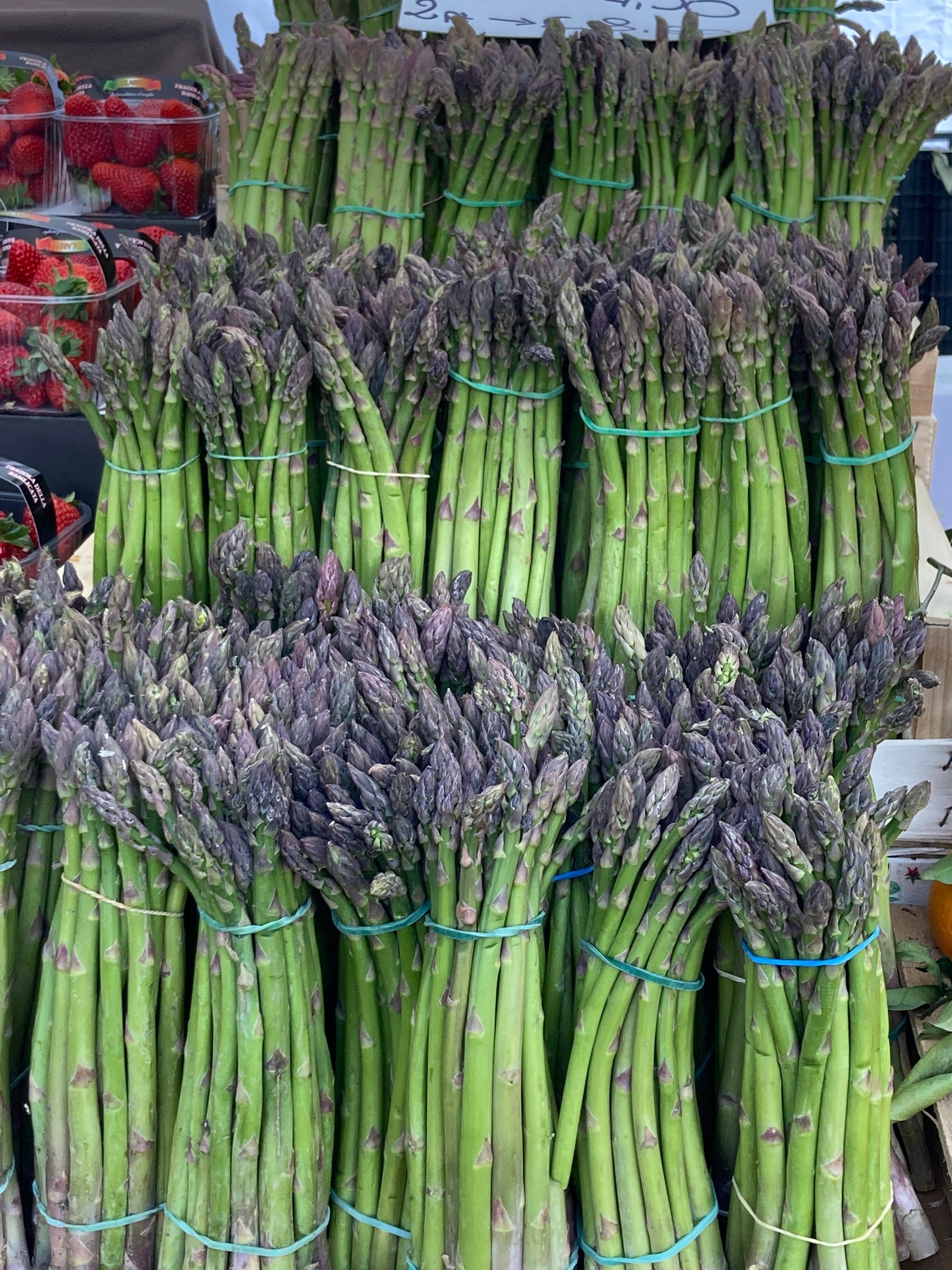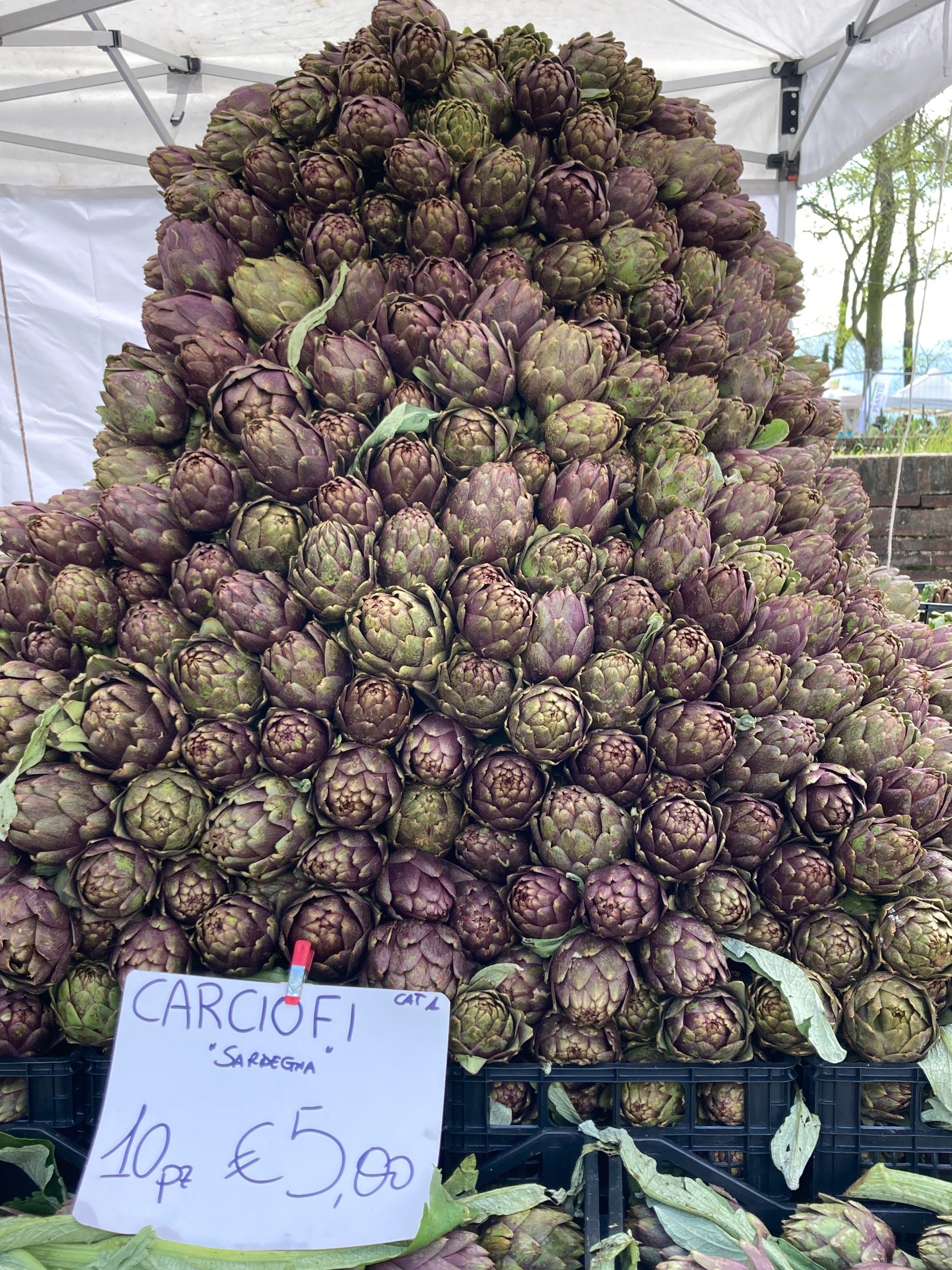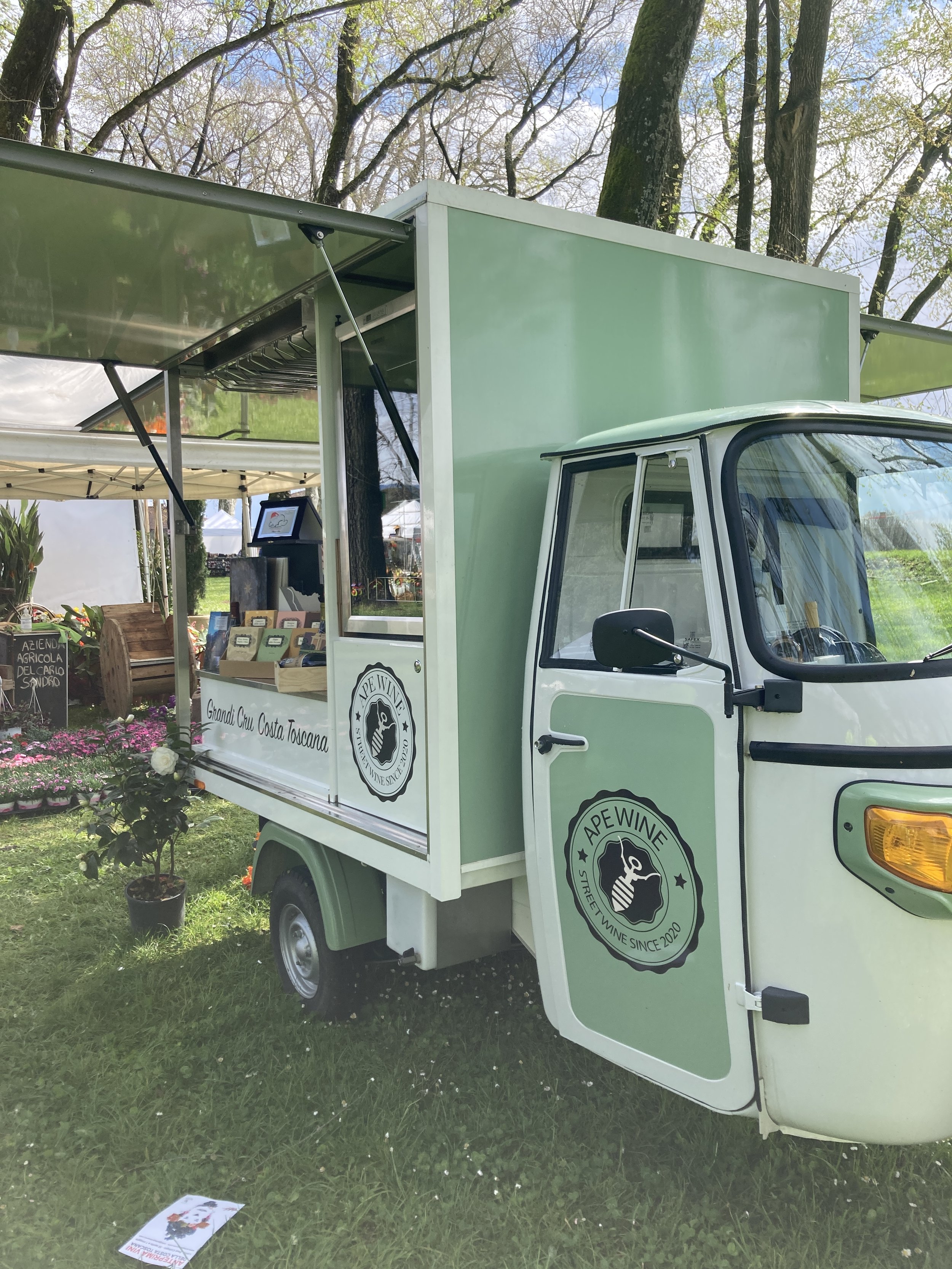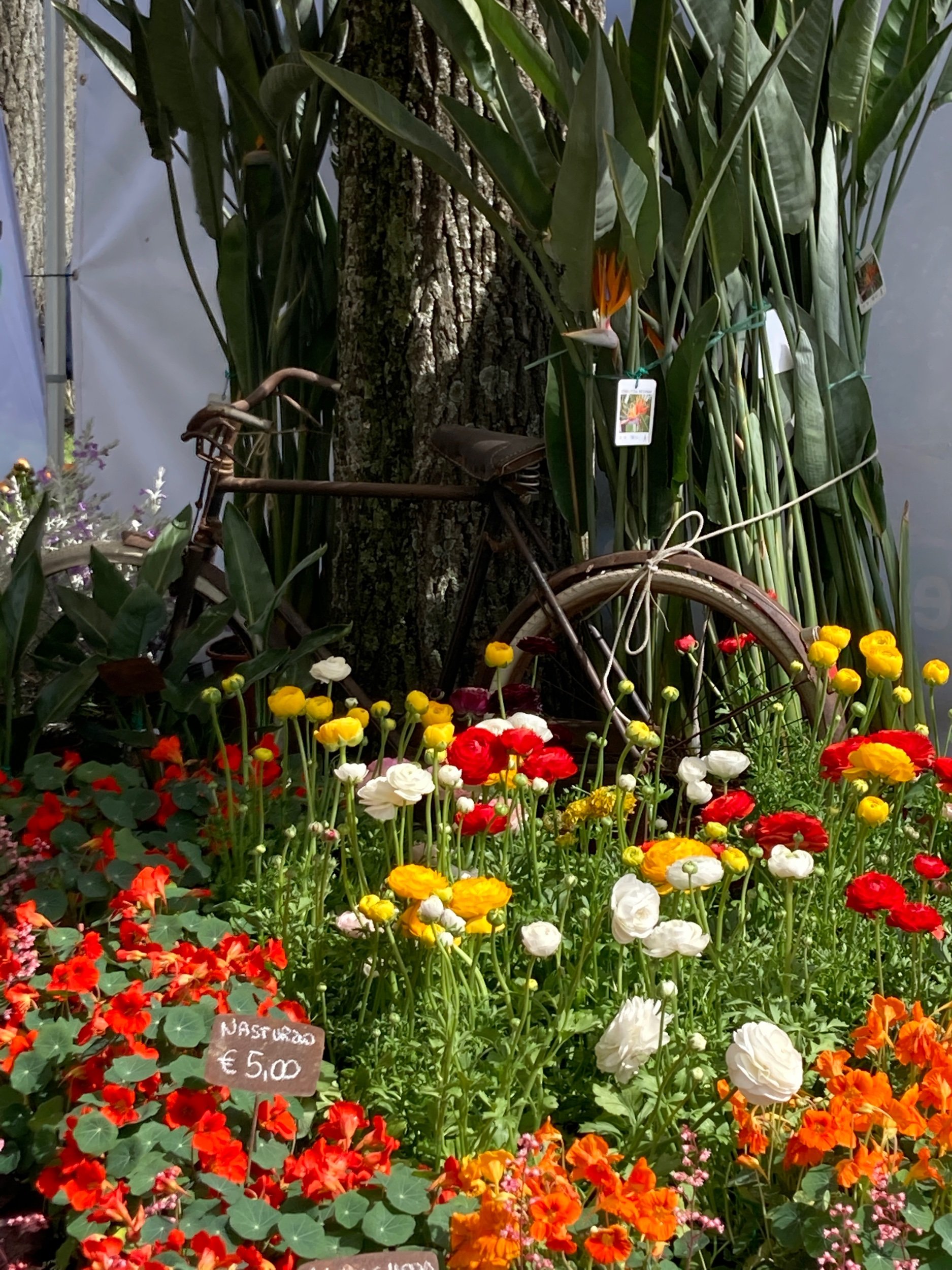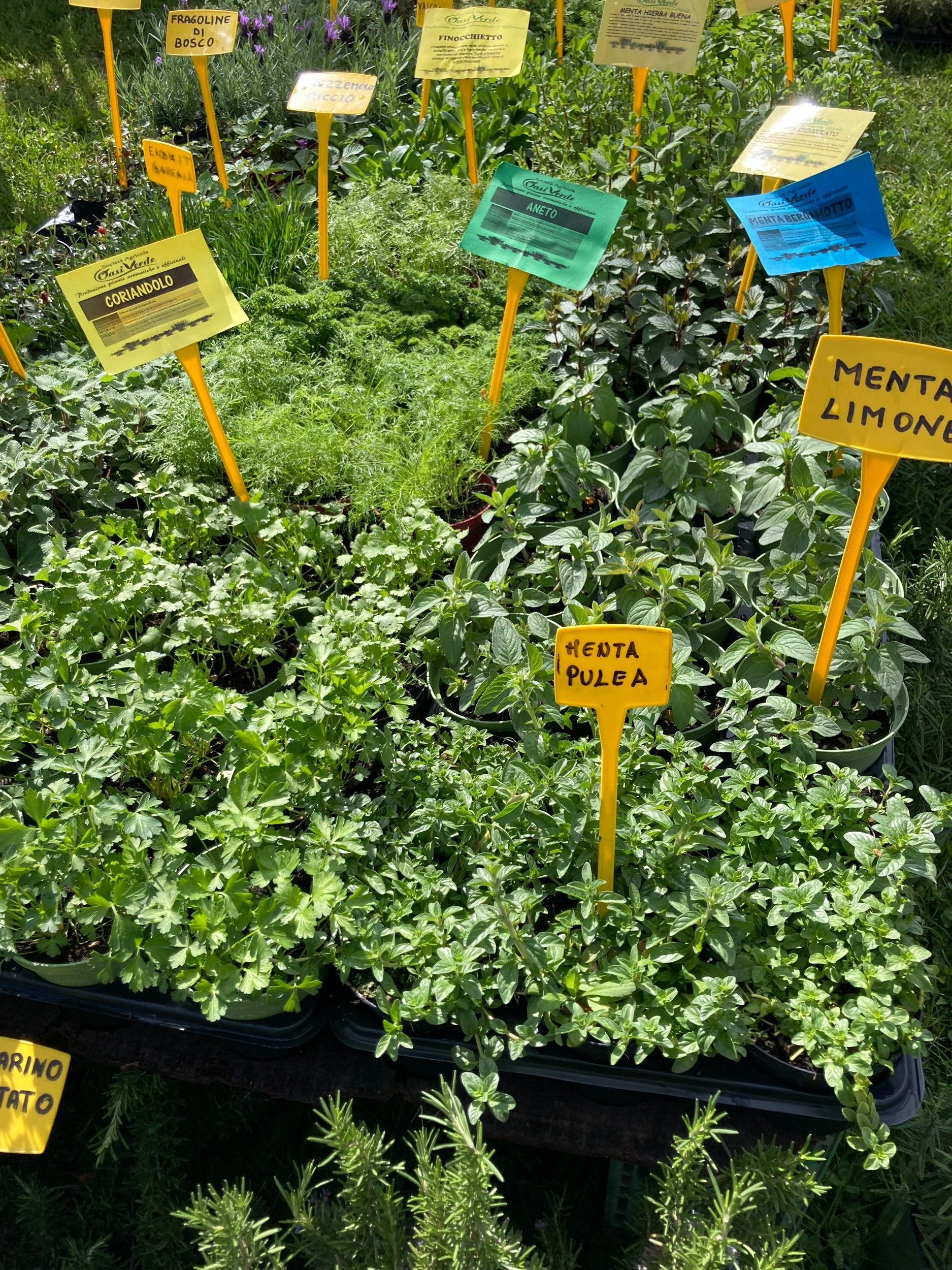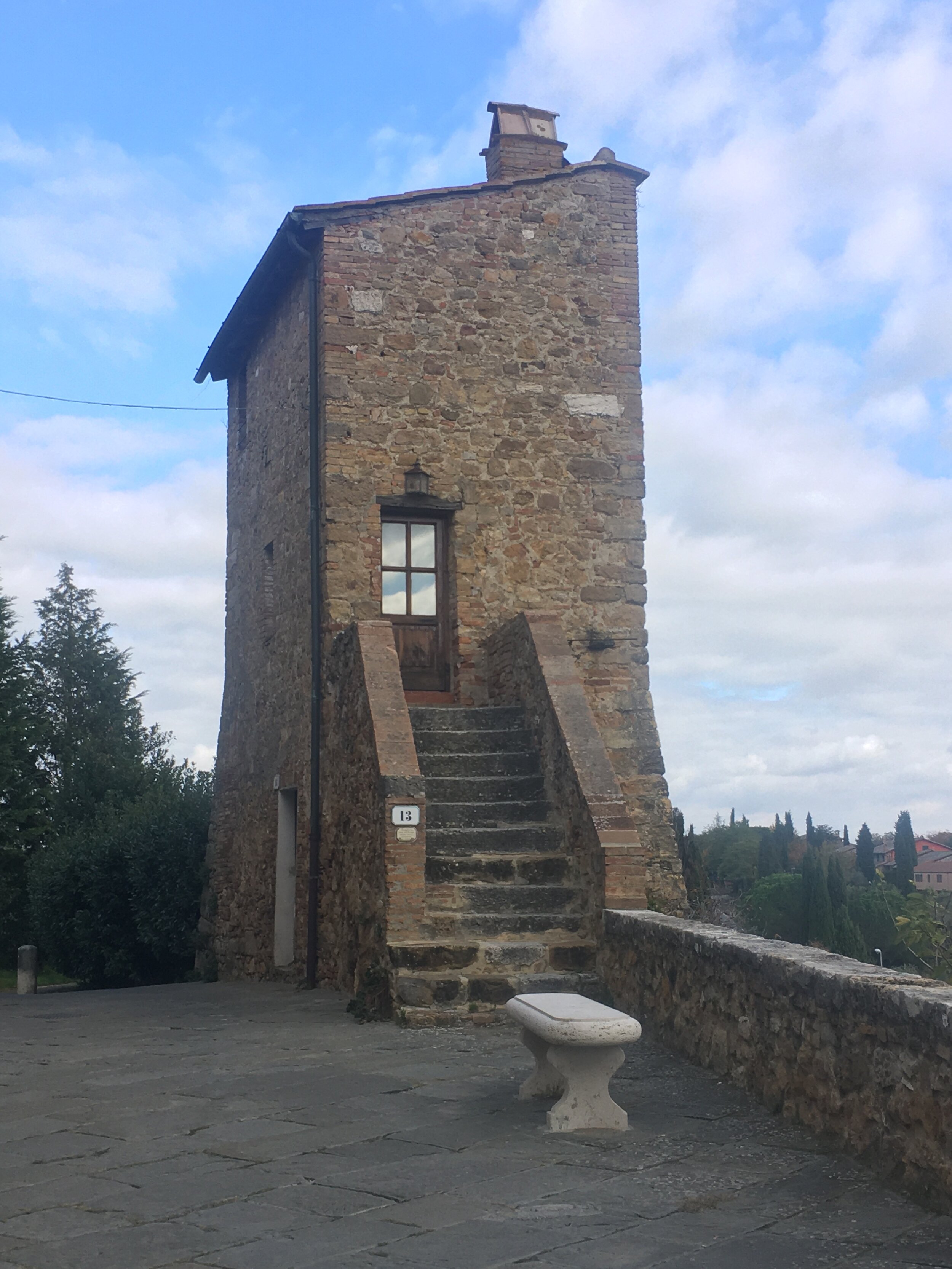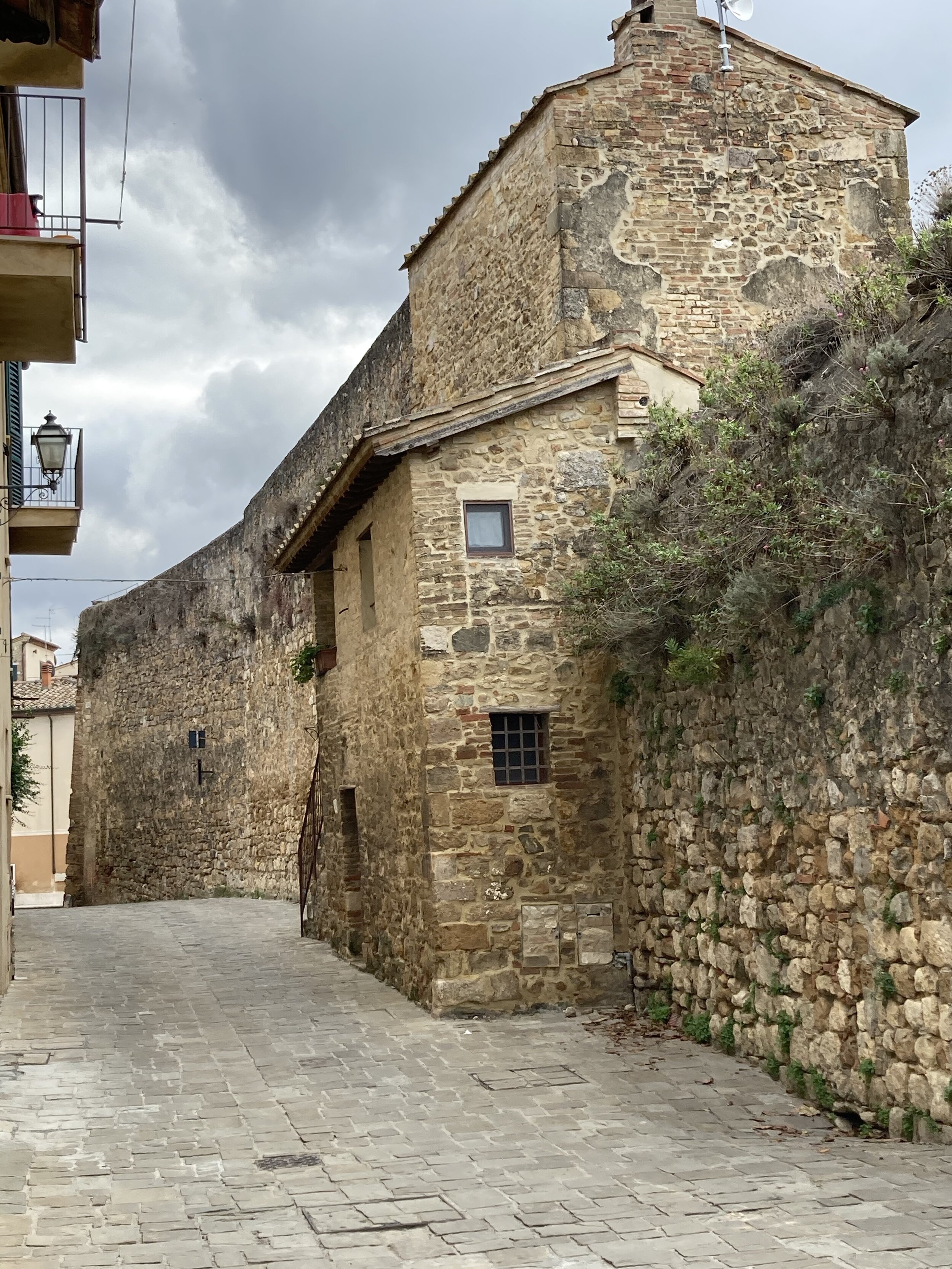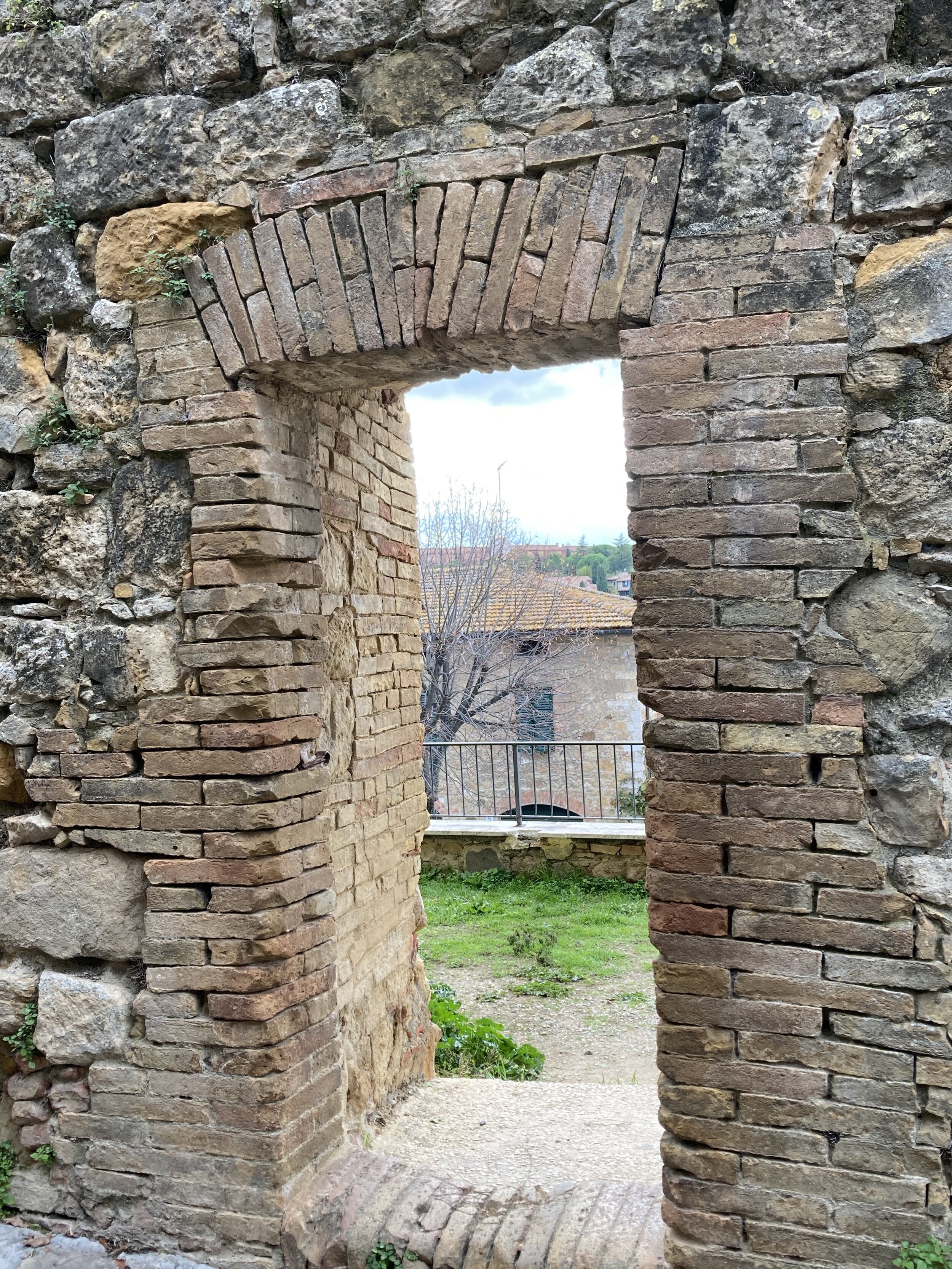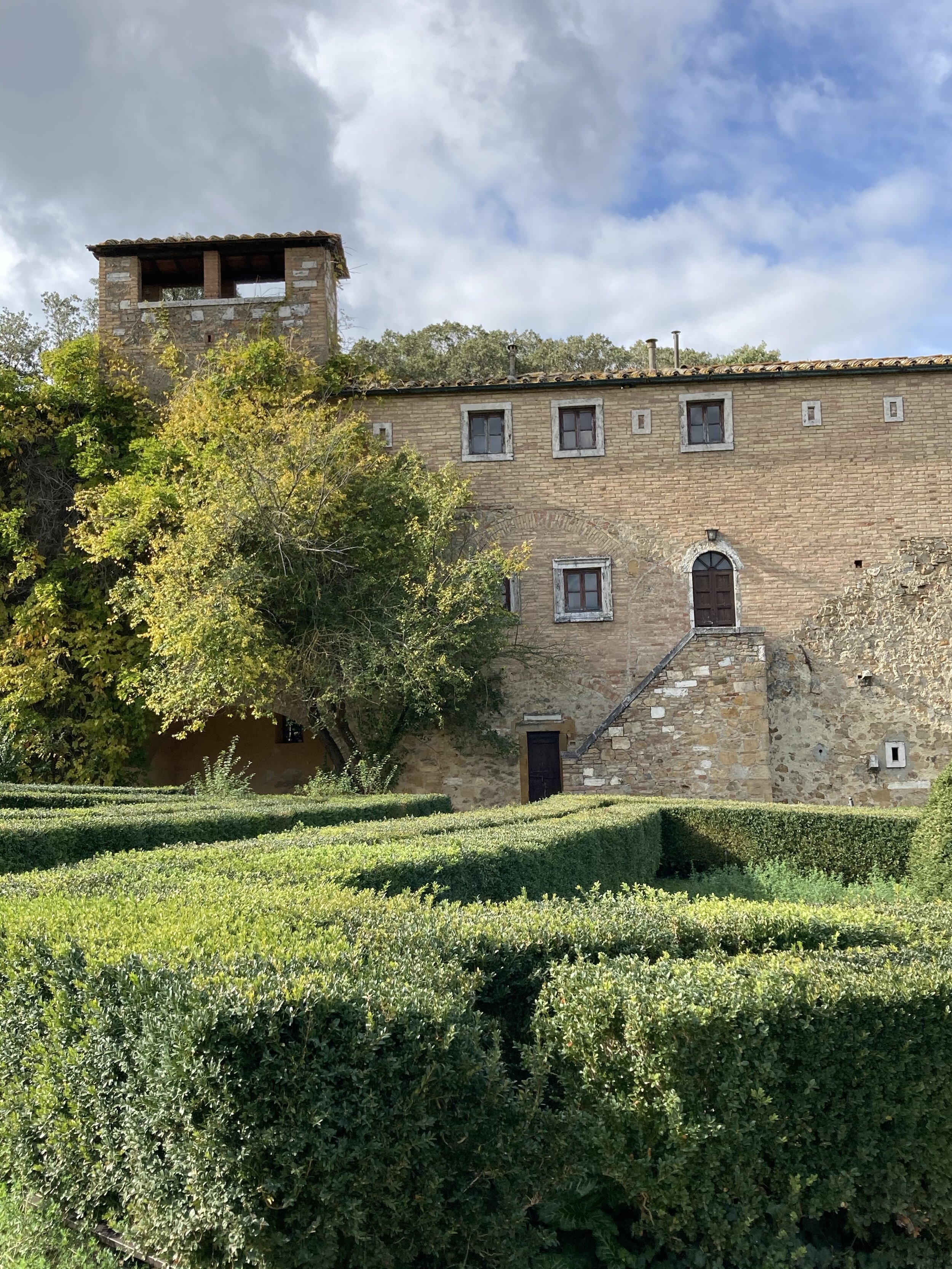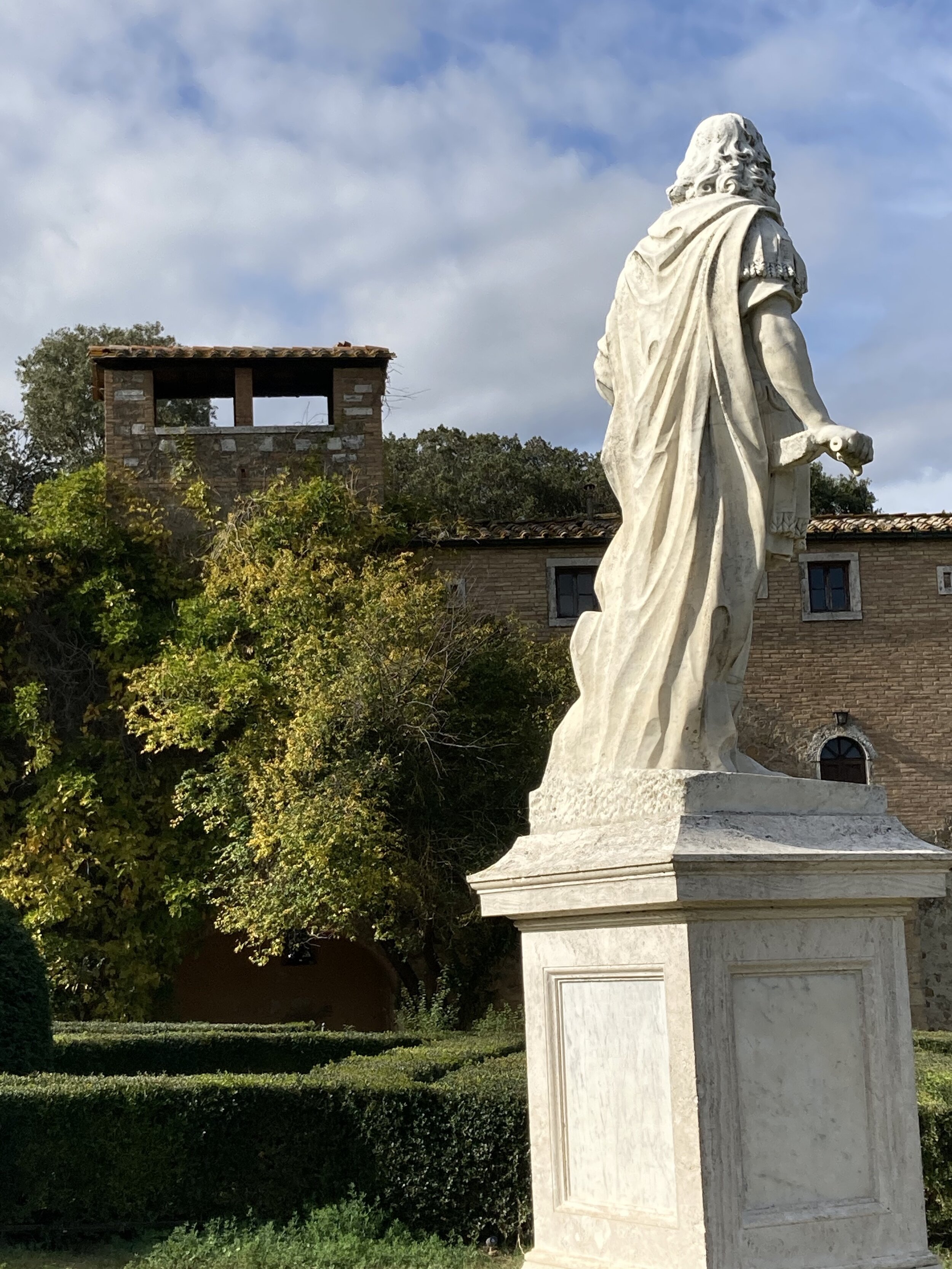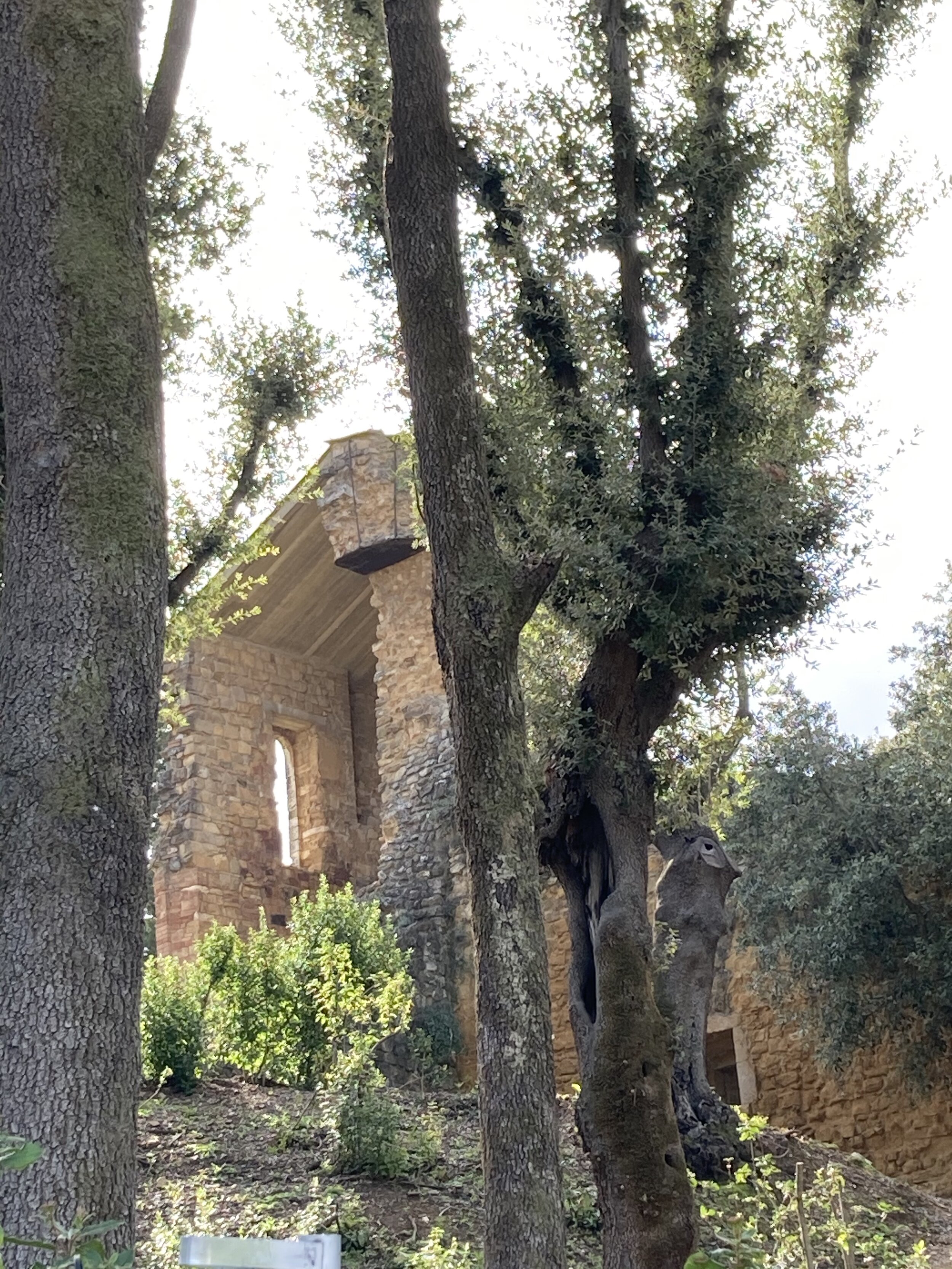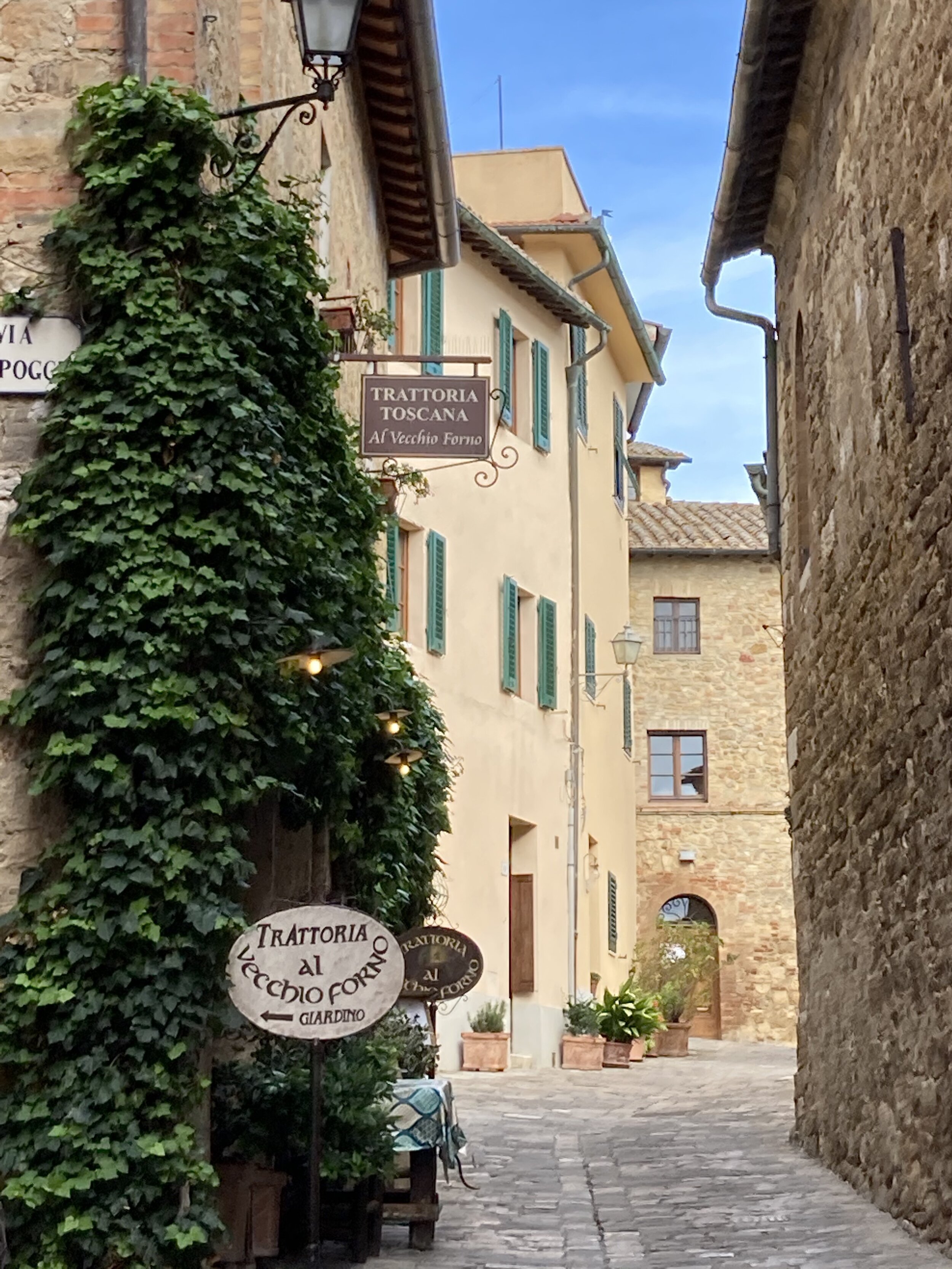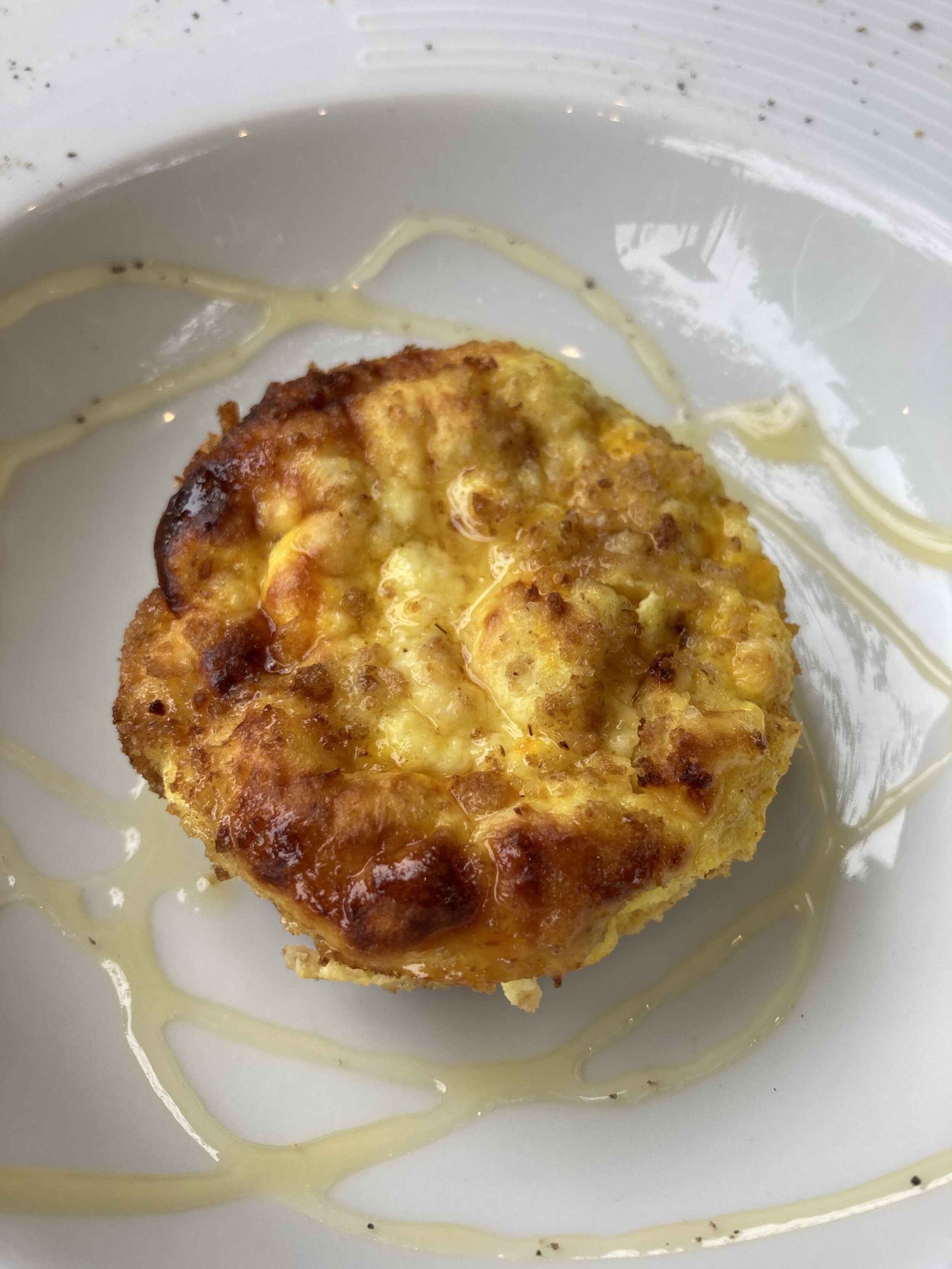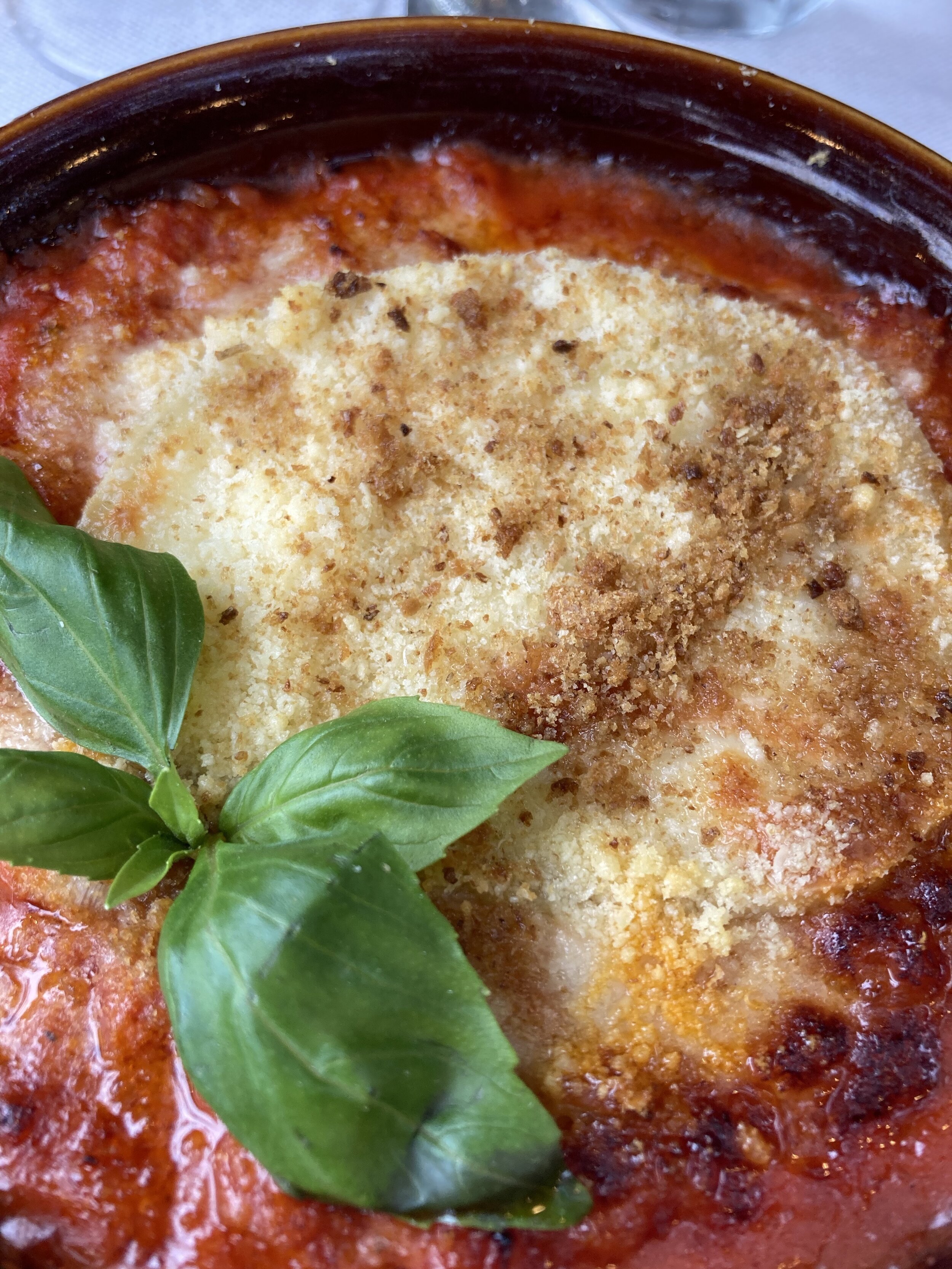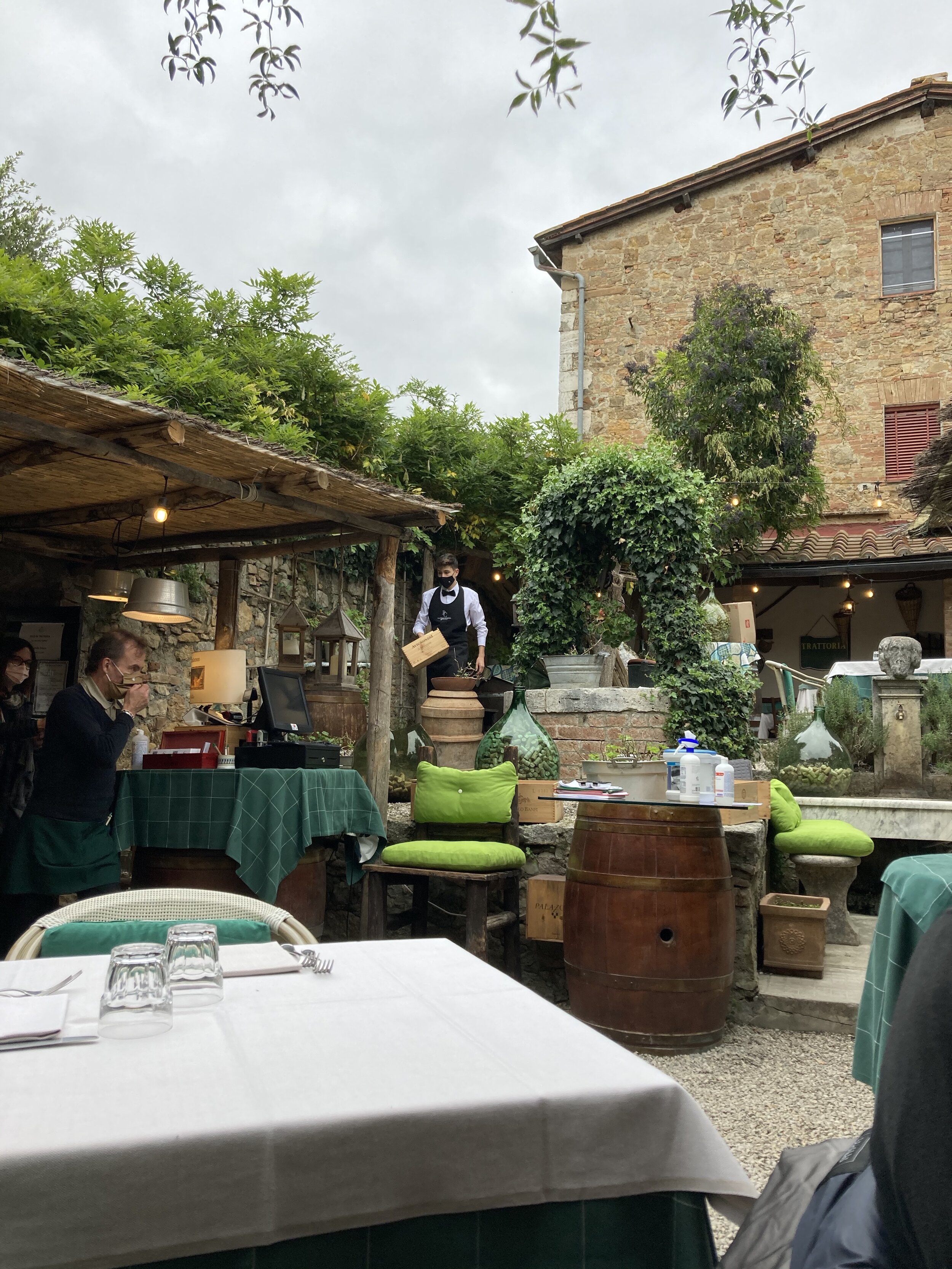A Lucchese April
April can be a fickle month here in Lucca. After a few warm days in late March, the kind of days that almost trick you into packing away the winter sweaters, April barged in with colder days, wind, cloudy skies, and rain. The rain is much needed after a dry winter, so I won’t complain. And if the saying is true, and April showers really do bring May flowers, then Lucca should have a most colorful May.
This stand of white wisteria was an early bloomer this spring
Despite the early April chill, the days are growing longer, the first leaves have appeared on the trees, and the first blossoms throughout town hold the promise that warm spring weather will soon arrive.
Verde Mura is the perfect place to buy pots of herbs for the garden.
Perhaps the best harbinger of spring is the return, after a two year COVID-related pause, of Lucca’s spring garden festival - the Verde Mura. This wonderful event showcases all things needed to plant and tend a garden. It doesn’t matter if your garden is just a few pots on a terrace, a couple of window boxes, or a large orto (vegetable garden), the Verde Mura has what you need. The festival takes place up on the walls that surround Lucca’s centro storico (historic center) which means that the views are part of the fun.
Garden art at Verde Mura
Local gardeners pull wagons through the many booths, collecting everything from rose bushes to fruit trees to annual flowers and herbs. Need a tractor? Well, Verde Mura has just the one. Same with shovels, clay pots, bug sprays, fertilizer, seeds, and outdoor grills. In addition to these garden necessities, this is the place to find whimsical garden art, herbal products (soaps, teas, spices, syrups), fragrant spices, and a variety of crafts.
It is always fun to see traditional craftsmen at work; I especially love watching the basket weavers and broom makers.
Of course there was food (this is Italy after all). In addition to booths serving coffee and sweets there were plenty of vendors of local meats, cheeses, honey, pasta, and breads - most offering an assaggio (a taste). One booth had mounds of beautiful spring artichokes, bundles of aspargus, pretty Tropea onions and ripe strawberries from the south of Italy.
There was even the cutest little wine truck!
A break in the rain allowed for a slow morning wander through the many booths and displays of plants.
I came home with some herbs which are now happily planted in my window boxes as well as a colorful bouquet of ranunculi for my apartment.
I may have needed a warm coat, a scarf, and a hat against the chill but there was still a hint of spring in the air. I am looking forward to seeing the season unfold.
